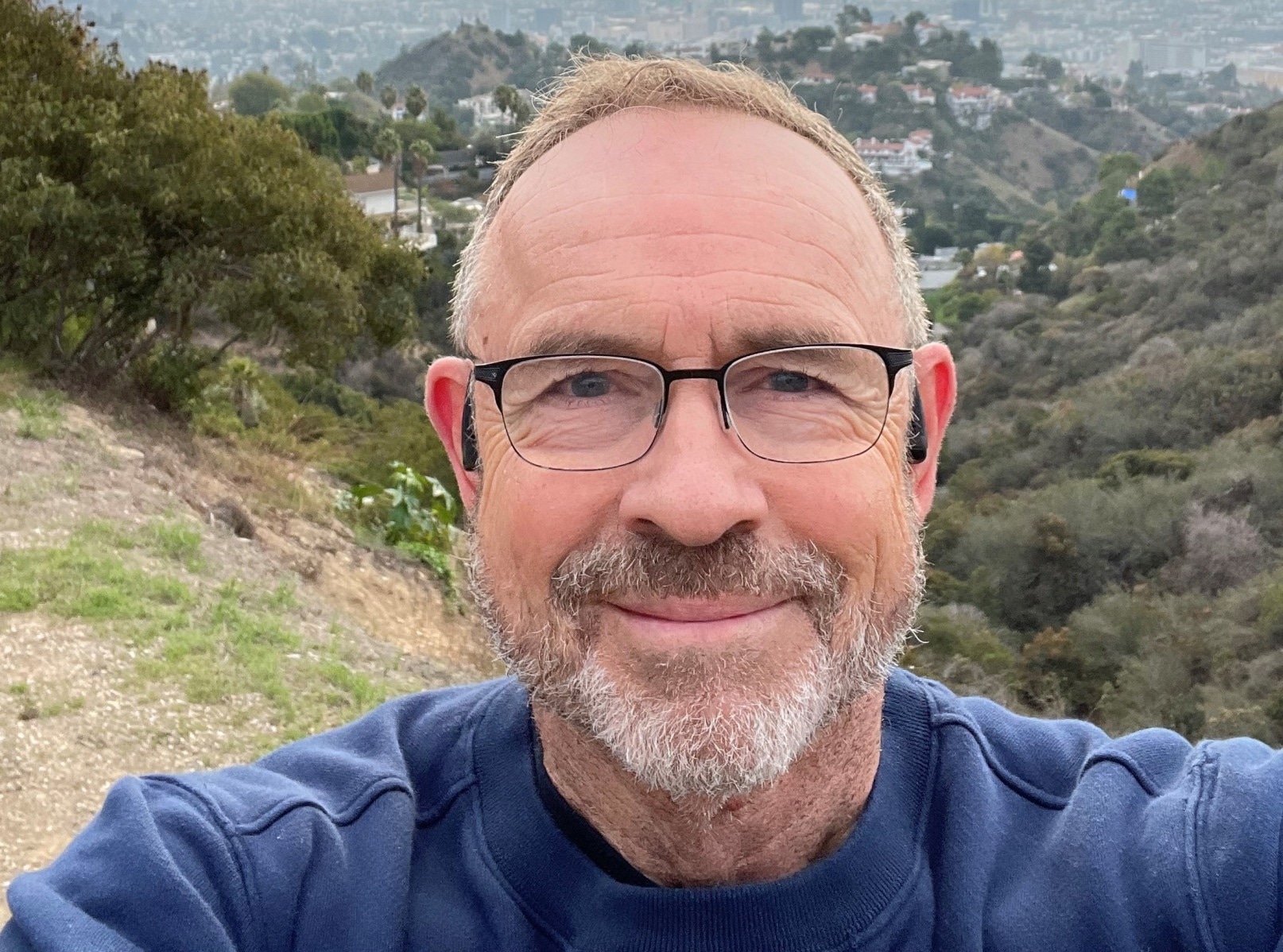The summit is a good place to be.
 Jon Anderson hiking Runyon Canyon in Los Angeles, December 2022. Photo courtesy of Jon Anderson.
Jon Anderson hiking Runyon Canyon in Los Angeles, December 2022. Photo courtesy of Jon Anderson.
Staying active on the hiking trails around the southern highlands of Australia, where he retired earlier this year after a career in film marketing, Jon Anderson is feeling there’s little he can’t conquer.
And he gives credit for that to the Smidt Heart Institute team at Cedars-Sinai and his surgeons, Joanna Chikwe, MD, professor and chair of the Department of Cardiac Surgery, and Dominic Emerson, MD, associate professor and director of Robotic Cardiac Surgery.
During a routine physical last year in Los Angeles, where Anderson was then living, his physician noted that a referral to a cardiologist was in order. Test results had shown that his cholesterol was very high, despite taking medicine to lower it. A stress test and angiogram--a heart scan--at the cardiology appointment revealed heart disease and a 70% blockage in his left main artery.
Anderson was shocked--he felt fine. No pain. No fatigue. Nothing out of the ordinary.
"There’s that classic story about the person who thought they were healthy and then just dropped dead on a hike," Anderson said. "I could have been one of those people. That was shocking and worrying."
When the cardiologist advised surgery, Anderson was intent on having it done at Cedars-Sinai. The Department of Cardiac Surgery in the Smidt Heart Institute is known for innovation and expertise in robotic and minimally invasive heart surgery to treat all forms of heart disease. The Smidt Heart Institute also is ranked #1 in California and #3 in the nation for Cardiology and Heart Surgery by U.S. News & World Report’s "Best Hospitals 2022-2023."
Chikwe, the Irina and George Schaeffer Distinguished Chair in Cardiac Surgery, is widely recognized for her skill in robotic and minimally invasive surgical techniques. When Anderson met with Chikwe to discuss surgical options that were right for him, he was quickly put at ease.
"She validated the enormity of what I was going through--heart surgery is extremely overwhelming--but she made me feel that I shouldn’t worry about it," he said. "As she explained the various approaches to surgery, I started to cry. She took my hand and said, ‘I know this is a big deal, but you are going to be fine.’"
Chikwe’s confidence is due to the Smidt Heart Institute’s multidisciplinary care team.
We can treat patients using minimally invasive methods, including robotic procedures, or traditional open-heart surgery, depending on things like age, other heart conditions and overall health. Jon was eligible for robotic coronary artery bypass surgery."
Joanna Chikwe, MD, Professor and Chair of Department of Cardiac Surgery, Cedars-Sinai
Coronary artery bypass graft surgery, also called bypass surgery, is the most common type of heart surgery. More than 300,000 people have successful bypass surgery in the U.S. each year.
Robotic surgeries may be less invasive than traditional open-heart surgeries and offer faster recovery times and less discomfort during healing, among other benefits.
Just as Chikwe had assured Anderson, he was fine after surgery on June 30, 2022. He did so well that he walked out of the Intensive Care Unit to a regular hospital room the very next day. On July 3, just three days after surgery, Anderson was able to go home, with only minimal discomfort and a few small incision marks.
"I can truly say that I received my freedom in time for Independence Day," he said. "I had such a great experience that I get emotional talking about it."
Anderson was back at work about a week after surgery. He was careful not to overexert himself, per doctor’s orders, but slowly he made his way back outside for flat, easy walks.
This October, Anderson will hike Peru’s famed Inca Trail to Machu Picchu on a five-day trek spanning 26 miles across steep mountain ranges. He’s been training with uphill hikes and stair climbs multiple times each week, plus swimming and lifting weights.
Neither the Inca Trail nor the preparation are for the faint of heart. And heart is what it’s all about.
"I’m not the least bit worried and have complete confidence in my health and my heart," he said. "That feels very liberating."
Freedom, just in time for his one-year anniversary post-surgery.
"Dr. Chikwe and her team helped me to reach a summit with my health," he said. "And now, after their help, I can reach the summit of Machu Picchu on my own."